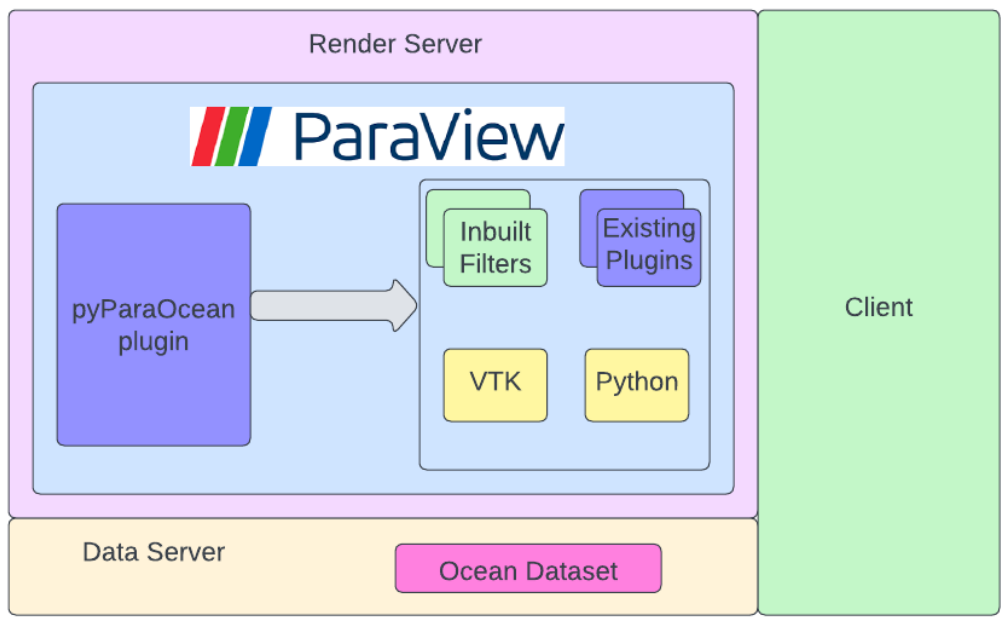pyParaOcean, A System for Visual Analysis of Ocean Data: Ocean data

:::info
Authors:
(1) Toshit Jain, Indian Institute of Science Bangalore, India;
(2) Varun Singh, Indian Institute of Science Bangalore, India;
(3) Vijay Kumar Boda, Indian Institute of Science Bangalore, India;
(4) Upkar Singh, Indian Institute of Science Bangalore, India;
(5) Ingrid Hotz, Indian Institute of Science Bangalore, India and Department of Science and Technology (ITN), Linköping University, Norrköping, Sweden;
(6) P. N. Vinayachandran, Indian Institute of Science Bangalore, India;
(7) Vijay Natarajan, Indian Institute of Science Bangalore, India.
:::
Table of Links
Abstract and Intro
Ocean data
pyParaOcean: Architecture
pyParaOcean: Functionalities
Case study: Bay of Bengal
Conclusion
Acknowledgments and References
2. Ocean data
Oceanographers typically deal with large multivariate spatiotemporal datasets – time-varying scalar or vector fields over a three dimensional region. The data is generated using simulations, satellite imagery, sensors on buoys, or in-situ physical observations. With strides in high performance computing, higher resolution sampling, and the increasing number of observables, the size of such datasets is rapidly increasing. Reanalysis datasets combine a numerical simulation model with observational inputs to furnish data that is spatio-temporally consistent. Ocean data contains strong temporal and spatial processes involving complex interactions between multi-scale entities [XLWD19]. It is analyzed on a variety of scales, from small-scale features such as eddies and fronts, to large-scale features such as ocean basins and circulation patterns.
\
All visualizations in this paper are generated using two datasets, the Red Sea and Bay of Bengal.
\
\
Red Sea: This dataset [TZG∗ 17] was made available as a part of the IEEE SciVis 2020 contest. It is a 50 member ensemble of threedimensional scalar and velocity fields. The data is regularly sampled on a 500 × 500 × 50 grid over 60 time steps covering a whole month of simulation time. Ensembles are the outputs of the simulated models with different parameters and initial conditions, and they may vary significantly even with a small change in parameter values. The members are the forecasts from MITgcm setups configured for the 30◦E - 50◦E and 10◦N - 30◦N domain that spans the entire Red Sea. They are implemented in Cartesian coordinates with a horizontal resolution of 0.04◦ × 0.04◦ (4 km) and 50 vertical layers, with a surface spacing of 4 m and a bottom spacing of 300 m. The dataset is available in the NetCDF format.
\
Bay of Bengal: This dataset is generated by a reanalysis product and available from the Nucleus for European Modelling of the Ocean (NEMO) repository [Mad08], with a daily resolution spanning the months of July-August 2020, a total of 62 time steps. The data is available in NetCDF format, with a 1/12◦ latitude-longitude resolution. Salinity measurements are available at 50 vertical levels, ranging from 1 m resolution near the surface to 450 m resolution towards the sea floor, including 22 samples in the upper 100 m. The Bay of Bengal, a geographical region confined by longitudes 75◦E and 96◦E and latitudes 5◦ S to 30◦N, with depth up to 200 m, is extracted from this data.
\
:::info
This paper is available on arxiv under CC 4.0 license.
:::
\
Welcome to Billionaire Club Co LLC, your gateway to a brand-new social media experience! Sign up today and dive into over 10,000 fresh daily articles and videos curated just for your enjoyment. Enjoy the ad free experience, unlimited content interactions, and get that coveted blue check verification—all for just $1 a month!
Account Frozen
Your account is frozen. You can still view content but cannot interact with it.
Please go to your settings to update your account status.
Open Profile Settings